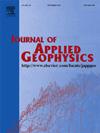Efficient self-attention based joint optimization for lithology and petrophysical parameter estimation in the Athabasca Oil Sands
IF 2.2
3区 地球科学
Q2 GEOSCIENCES, MULTIDISCIPLINARY
引用次数: 0
Abstract
Accurately identifying lithology and petrophysical parameters, such as porosity and water saturation, are essential in reservoir characterization. Manual interpretation of well-log data, the conventional approach, is not only labor-intensive but also susceptible to human errors. To address these challenges of lithology identification and petrophysical parameter estimation in the Athabasca Oil Sands area, this study introduces an AutoRegressive Vision Transformer (ARViT) model for lithology and petrophysical parameter prediction. The effectiveness of ARViT lies in its self-attention mechanism and its ability to handle data sequentially, allowing the model to capture important spatial dependencies within the well-log data. This mechanism enables the model to identify subtle spatial and temporal relationships among various geophysical measurements. The model is also interpretable and can serve as an assistive tool for geoscientists, enabling faster interpretation while reducing human bias. The interpretable nature of the model should assist geoscientists in conducting faster quality checks of the predictions, ensuring that errors are not propagated to subsequent stages. This study adopts a multitask learning approach, jointly optimizing the model's performance across multiple tasks simultaneously. To evaluate the effectiveness of the ARViT model, we conducted series of experiments and comparisions, testing it against traditional artificial neural networks (ANN), Long Short-Term Memory (LSTM), and Vision Transformer (ViT) models. To showcase the versatility of ARViT, we apply Low-Rank Adaptation (LoRA) to a different smaller dataset, showing its potential to adapt to different geological contexts. LoRA not only helps in model adaptability but also helps to reduce the number of trainable parameters. Our findings demonstrate that ARViT outperforms ANN, LSTM, and ViT in estimating lithological and petrophysical parameters. While lithology prediction has been a well-explored field, ARViT's unique blend of features, including its self-attention mechanism, autoregression, and multitask approach along with efficient fine tuning using LoRA, sets it apart as a valuable tool for the complex task of lithology prediction and petrophysical parameter estimation.
阿萨巴斯卡油砂岩性和岩石物理参数估计的高效自注意联合优化技术
准确识别岩性和岩石物理参数(如孔隙度和含水饱和度)对储层特征描述至关重要。人工解释井记录数据是一种传统方法,不仅耗费大量人力,而且容易出现人为错误。为了应对阿萨巴斯卡油砂地区岩性识别和岩石物理参数估计方面的挑战,本研究引入了用于岩性和岩石物理参数预测的自动回归视觉转换器(ARViT)模型。ARViT 的有效性在于其自我关注机制和按顺序处理数据的能力,使模型能够捕捉到井记录数据中重要的空间依赖关系。这种机制使模型能够识别各种地球物理测量数据之间微妙的时空关系。该模型还具有可解释性,可作为地球科学家的辅助工具,加快解释速度,同时减少人为偏差。模型的可解释性应有助于地球科学家对预测结果进行更快的质量检查,确保错误不会传播到后续阶段。本研究采用多任务学习方法,同时在多个任务中联合优化模型的性能。为了评估 ARViT 模型的有效性,我们进行了一系列实验和比较,将其与传统的人工神经网络(ANN)、长短期记忆(LSTM)和视觉转换器(ViT)模型进行了测试。为了展示 ARViT 的多功能性,我们在另一个较小的数据集上应用了低级自适应(LoRA)技术,以显示其适应不同地质环境的潜力。LoRA 不仅有助于提高模型的适应性,还有助于减少可训练参数的数量。我们的研究结果表明,在估计岩性和岩石物理参数方面,ARViT 优于 ANN、LSTM 和 ViT。岩性预测一直是一个被广泛探索的领域,而 ARViT 的独特功能(包括自注意机制、自回归、多任务方法以及使用 LoRA 进行高效微调)使其脱颖而出,成为岩性预测和岩石物理参数估计这一复杂任务的重要工具。
本文章由计算机程序翻译,如有差异,请以英文原文为准。
求助全文
约1分钟内获得全文
求助全文
来源期刊

Journal of Applied Geophysics
地学-地球科学综合
CiteScore
3.60
自引率
10.00%
发文量
274
审稿时长
4 months
期刊介绍:
The Journal of Applied Geophysics with its key objective of responding to pertinent and timely needs, places particular emphasis on methodological developments and innovative applications of geophysical techniques for addressing environmental, engineering, and hydrological problems. Related topical research in exploration geophysics and in soil and rock physics is also covered by the Journal of Applied Geophysics.
 求助内容:
求助内容: 应助结果提醒方式:
应助结果提醒方式:


